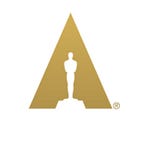Three Important Lessons About Life (and Filmmaking) You Learn in the Hair and Makeup Trailer
It’s Oscar Week, which means we’ll be sharing stories and lessons from this year’s nominees. Here, the artists behind the films nominated for Makeup and Hairstyling share the things they learned.
At the movies, it can be easy to overlook the detail that goes into characters’ makeup and hairstyling. But without them, there’d be no movie monsters, no quintessential ’80s bangs and no startling transformations of beloved stars.
“If you can’t see it, or you forget you’re seeing it, then we’ve done our jobs well.” -Daniel Phillips, “Victoria & Abdul”
Makeup and hairstyling can give an audience a sense of time and place, and actors a window into their character. And, as these Oscar-nominated artists will attest, they can teach you important lessons for living your best life, both on set and off.
Be a Good Collaborator
When Gary Oldman agreed to completely transform into Winston Churchill for The Darkest Hour, it was on one condition: that prosthetics wizard Kazuhiro Tsuji also be involved in the project. Once he was in the chair, makeup supervisor David Malinowski said, Oldman was a great partner.
“He would come in without complaint at whatever hour, even if it was 3 a.m. He let us shave his head every day without complaint, close his eyes, open his eyes, turn his head — whatever we needed to do our jobs.”
Makeup and hair artist Lucy Sibbick concurred. “Between takes, he would take very good care of the makeup and hair pieces, some of which were quite fragile.”
Inspire Confidence
When director Stephen Chbosky signed on the do the movie “Wonder,” it was because makeup artist Arjen Tuiten convinced him that it was possible to create the appearance of Treacher Collins syndrome on his young star. “If we had CGI’d it, it would have felt like a computer. A real boy would feel like a real childhood.”
Tuiten “had a gut feeling” that such a dramatic transformation could be done practically.
Chbosky looked at his collaborator in laughing disbelief. “That’s funny, because you sounded a lot more confident in the room. You were very convincing and I took this project because I believed you were the guy who could do it.”
Be Prepared — To Improvise
To recreate the looks of nineteenth-century India and Queen Victoria’s England, hair and makeup artists Daniel Phillips and Lou Sheppard were often working under the gun. “You never get all the time you want to test and prepare,” Phillips said. “But that’s when you do some of your best work.”
“We had these workshops, and a lot of the artists had never done the period before, so we had to teach as we went,” said Sheppard. In addition to massive crowd scenes that provided their own challenges, they didn’t have many visual references for Abdul. “It’s the 1800s, there’s no videos, no pictures of this guy,” said actor Ali Fazal. “So there was a lot of improvising in the trailer.”
“Solving unforeseen problems is part of the fun of it,” Phillips added.
Click here to learn more about this year’s Oscar nominees. For all things Oscars, visit Oscar.com.
